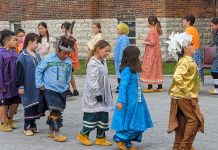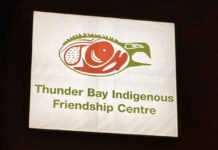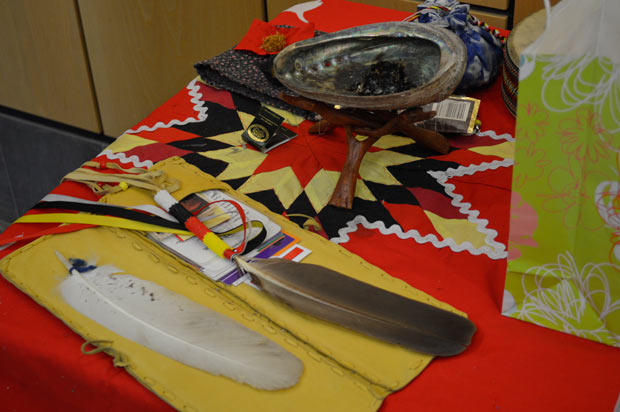
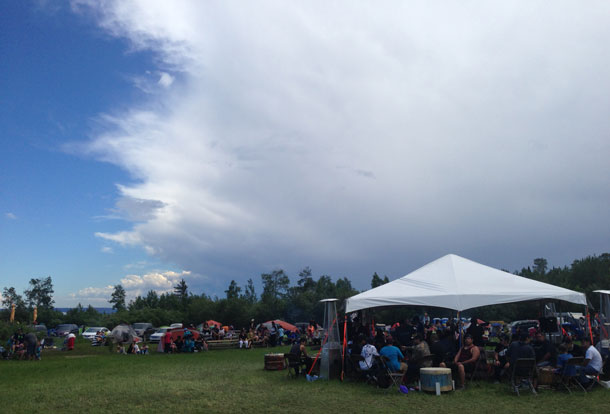
THUNDER BAY – Boozhoo, Kapeetayawaywetung ndishnikaaz, Mikinaak ndoodem, Neskantaga ndoonji.
What does it mean to be a proud Canadian? To wear white and red on Canada Day? To enjoy a cold beer while fishing? We all know the history of Canada, July 1 – Sir John A. Macdonald becomes the first prime minister of the Dominion of Canada, The Great Depression of 1929-1933, and the CF-105 Arrow taking flight on March 25, 1958. Those are great points in history, but what about the colonization of Turtle Island and what we call today Canada?
Starting in 1492, Christopher Columbus set sail in multiple voyages in hope of finding a faster route to India thus leading to the discovery of Central and South America.
Even before Columbus there were reports of European contact with the original people of Turtle Island. The Norse Colonization of the Americas began as early as the 10th Century AD.
The history of Canada, in large part, is the history of the colonization of Anishnawbek peoples. Historians have amply documented this colonization, as a historical event, and as a series of events.
Colonization can be defined as some form of invasion, dispossession and subjugation of people. The invasion need not be military; it can begin or continue as geographical intrusion in the form of agricultural, urban or industrial encroachments.
The result of such incursion is the dispossession of vast amounts of lands from the original inhabitants of Turtle Island. This is often legalized after the fact. Historically, First Nation peoples (defined as Status Indians by the Indian Act) lost roughly 98% of their original lands through various legal documentations such as treaties and the Indian Act. The colonizer/colonized relationship are by nature unequal that benefits the colonizer at the expense of the colonized.
So how does it feel to be colonized? With mixed emotions, opinions can be very valuable for some but painful for others.

Today Anishnawbek people tend to use the past as an advantage by rallying and hosting gatherings, they honour the past by fighting for their future. With documented treaties and political aboriginal based organizations, the Anishnawbek people of Canada today are colonized into the dominate culture.
Due to the fact of cultural assimilation, a lot of the Anishnawbe language has been lost; a lot of teachings have been misconceptions and the connection to the land and resources are being mistreated.
Quote “To assimilate the Indians into the dominant culture”
During the 1500’s, the French grew interest in the new world, navigation of the new world took place, in hopes of finding a route into the Pacific Ocean. The Constitution of Canada was shaped partly by the government of New France.
Elements such as civil law continue to the present day. In addition, efforts of French Canadians to preserve the distinctness of the province today have their roots in the friction caused by the interaction of the British and French Canadian cultures.
The Royal Proclamation of 1763, a document that set out guidelines for European settlement of traditional Anishnawbek territories across Turtle Island. In the Royal Proclamation, ownership over Canada is issued to King George.
However, the Royal Proclamation explicitly states that Anishnawbek title has existed and continues to exist, and that all land would be considered Anishnawbek land until ceded by treaty. The Proclamation forbade settlers from claiming land from the Aboriginal occupants, unless it has been first bought by the Crown and then sold to the settlers. The Royal Proclamation further sets out that only the Crown can buy land from First Nations.
In 1876 the Indian Act came into place. The Indian Act is a Canadian federal law that governs in matters pertaining to Indian status, bands, and Indian reserves. To be federally recognized as an Indian either in Canada or the United States, an individual must be able to comply with very distinct standards of government regulation… The Indian Act in Canada, in this respect, is much more than a body of laws that for over a century have controlled every aspect of Indian life. As a regulatory regime, the Indian Act provides ways of understanding Anishnawbek identity, organizing a conceptual framework that has shaped contemporary Anishnawbek life in ways that are now so familiar as to almost seem “natural.”
I have personally asked a local Anishnawbek youth in the community about colonization and how it feels to be colonized. In a long response he had this to say: “It feels great man. We were put into a colonized nation where we gained currency and are constantly pushed to consume all these GMOs in the food and want us to feel like we’re not slaves even though it’s quite obvious since we have to abide by these laws and government. I love how the cultural genocide happened to our people and the masses tell us to get over it. I love how the modern day Europeans act like they own this place by saying stuff like ‘kick out the immigrants don’t let them in’ meanwhile their statement is just hypocritical in an ironic sense. All in all screw colonization”.
Today colonization still tends to happen, here are some important points in history:
- 1492 – Colonization of Canada, Columbus set sail
- 1763 – Royal Proclamation, lands and resources rights
- 1876 – Creation of the Indian Act and Indian Residential School system
- 1884 – Banning of cultural ceremonies, potlatch
- 1960 – Aboriginal people gain the right to vote
- 1969 – The White Paper
- 1982 – Constitution Act, Section 35
- 1990 – The Oka Crisis
- 1996 – The last federally run Indian Residential School closes
- 2008 – The Prime Minister makes a formal apology to the victims and survivors of the Indian Residential Schools
- 2010 – Canada signs the UN Declaration on the Rights of Indigenous Peoples
- 2012 – Idle No More
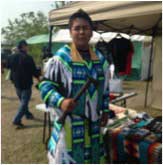
I am only a young man, I have never witnessed any of these historic events in my lifetime.
Colonization doesn’t only effect one group of people but all peoples as well.
How can we reconcile to overcome these obstacles that Anishnawbek people face?
How can we decolonize ourselves to be independent?
Baamaapii
Clyde Moonias






